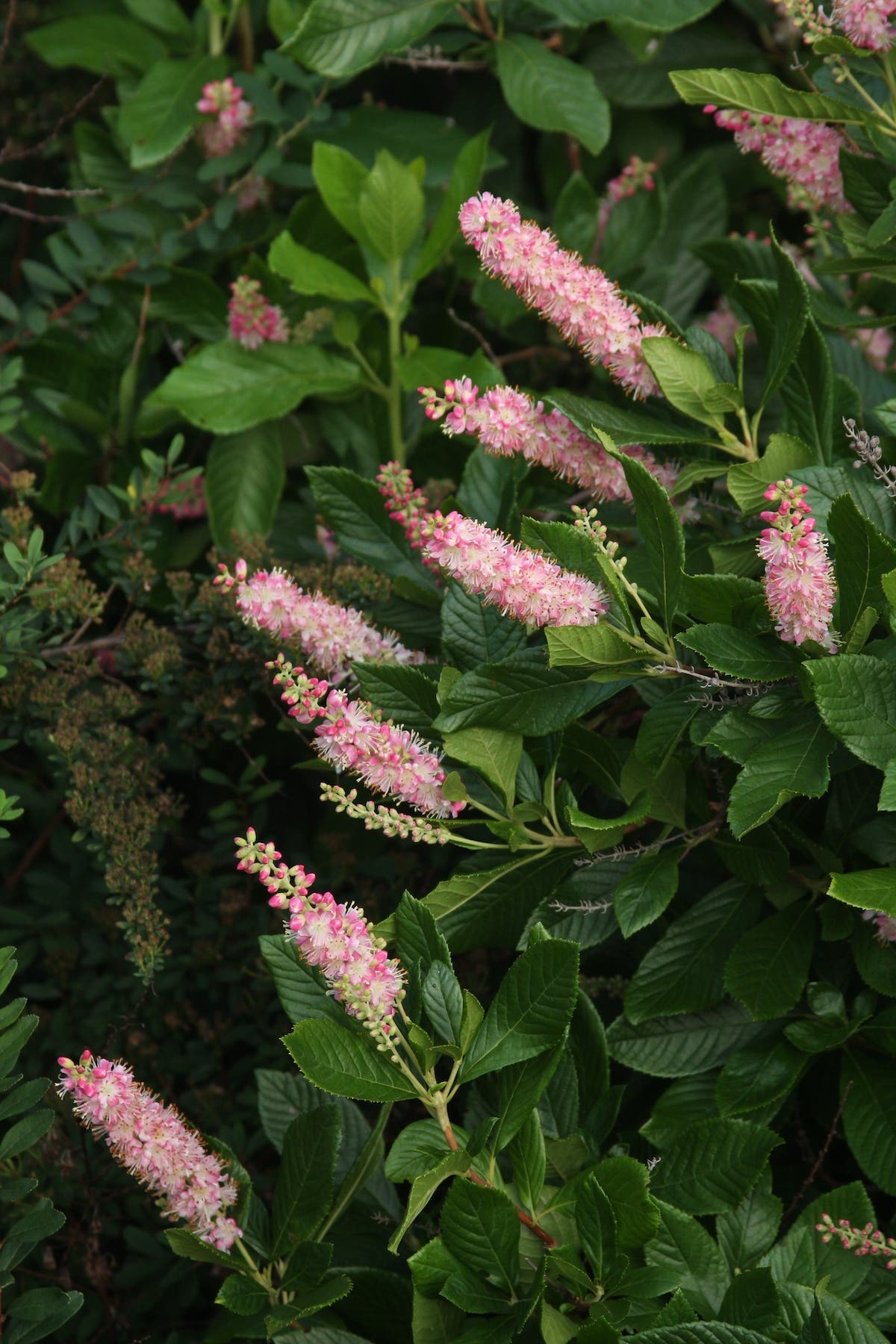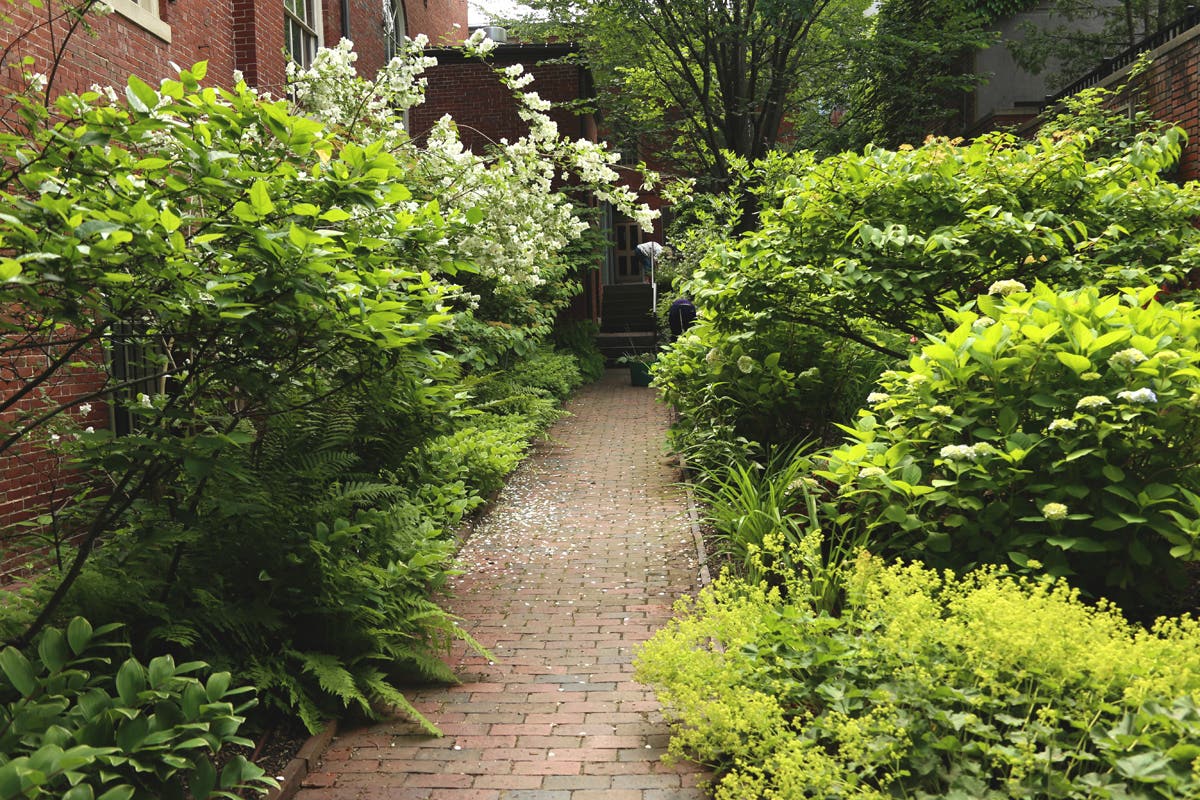Walkable Plants: a Cautionary Tale
A gardener’s story of plants you can step on.
There are five types of nearly flat plants in my garden. Each one suppresses weeds like a champ, remains durable under foot and returns year after year with no tending or fuss. Three of them were planted by no one, biding their time in the soil’s seed bank for an opportunity to flourish. The other two were planted by humans. I may or may not have been the one to plant them.
Patient and Primitive
An area of open ground in the shade of my house once held a group of raised beds. To keep the weeds down, each year I installed untold yards of mulch between the boxes. Then one summer I skipped the mulch, perhaps to give my wallet and my back a break.
Of course, by doing so I’d blown the doors off the seed vault, and the weeds erupted the following spring. I needed a solution but I refused to get back on the mulch merry-go-round. Taking my cue from a small patch of moss nearby, I started weeding selectively, with the idea that a carpet of moss would be nice, and maybe I could make one by pulling out everything else. I kept pulling the tall stuff, and the moss started spreading.
Life got really exciting in midsummer when I spotted a miniature forest of what looked like umbrellas without their fabric–just umbrella frames—hovering over the moss. A quick internet search for “umbrella moss” turned up the wrong plant, but scanning farther down the search results provided the ID.
The little umbrellas were not part of the moss at all, but instead the egg-bearing structures of common liverwort (Marchantia polymorpha). The liverwort’s species name means "many shaped." Its round-lobed, irregular leaf-like bodies creep along the ground, mingling well with numerous types of moss.
Mosses and liverworts are among the earliest and most primitive of all plants, and they are tough. They are non-vascular, which means they don’t have the ability to move water through their tissues like a plant with leaves, stems and roots does. They get their water by absorbing it through their cell walls. Without the scaffolding that a vascular system provides, they are unable to grow tall, so they spread. They thrive in moist areas but can survive long periods of drought. This explains why patches of them will turn brown and the plants appear dead, and then green up again after it rains.
I think their lack of roots is one of their best traits. To transplant a section, just peel it up gently. Place it on bare soil and press it firmly onto the ground. If the conditions are right, it’ll take off.
My “moss farm” is now one of my favorite spaces. I love to work barefooted there, walking all over the mosses, liverworts and other small herbaceous plants that have crept in. By selectively weeding, I removed the competition, which allowed this tightly woven network of tiny, ancient plants to thrive. And I haven’t thought of mulching since.
Volunteer No. 3
The third plant that appeared on its own in my yard is creeping cinquefoil (Potentilla reptans), which is in the rose family (Rosaceae). It’s easy to identify plants in this family; just check the flowers, which usually have five petals.
My creeping cinquefoil established itself on a sunny, dry slope where the soil lacks much organic matter. It’s no more than four inches tall when in leaf, and it spreads by sending runners (stolons) across the ground. It produces a new plant at each spot where the stolon touches down. The flower is yellow, so it looks similar to barren strawberry (Waldsteinia).
Creeping cinquefoil shows up in sunny, disturbed but untended sites, which describes a good bit of my garden. I allow it to fill in the unplanted spaces, for soil retention on the slope, until I get around to deciding what should go there. But I pull it out whenever it gets too close to a section that I’ve finished planting. It is useful as a walkable, tough ground cover. It is also persistent but, so far, easy to control.
Given an Inch
I admit to having a role in planting the last two ground covers on this list. I was witness to the first one. It happened right in front of me. I should have said something. And the second one, well, I guess I was seduced.
Years ago, I watched from my deck as my neighbor planted a flat of periwinkle (Vinca minor) in a section of the garden that we share. It grew quickly on that shady, bare slope, and it accelerated as it neared the sunnier end of the garden.
Vinca minor is a versatile and adaptive plant, with traits that seem attractive. It takes foot traffic, it is evergreen and it offers a stunning show of purple to blue flowers in the spring. Periwinkle has a five-petalled flower so it, too, is in the rose family.
Three years after the initial planting, it began to show its true colors. Like the cinquefoil, vinca spreads by stolons. Unlike my cinquefoil, it has overrun everything in its path. The delicate patch of coral bells (Heuchera) seedlings that I was nurturing didn’t stand a chance.
Last summer I started ripping it out, and I will never select it for a client’s yard, or plant it in any bed or container of mine. A periwinkle stolon will rappel over a pot’s edge until it touches down, then it’s off and running.
Finally, who knew a cutie in a four-inch pot could cause a lot of trouble? Happy with my bargain from a local plant sale, I tucked my new stonecrop (Sedum) in the ground according to the tag: in a space that is part sun and very dry. In the first couple seasons it spread nicely, and I could walk all over it without causing damage. When bare spots needed filling, I’d hack off a piece to replant here or there. Free plants are the best plants, right?
And then came year three. What is it about the third year after planting? It seems to be the magic number that reveals a plant’s true nature. As with the vinca, I’m pulling all the stonecrop out.
While all the plants I’ve mentioned can be described by their benefits – walkable, tough, drought tolerant — I am skeptical now when I read a plant description that uses these words. The other side of tough is bully, and walkable can mean that it will outlive us all.
Moss credit: liz west/CC BY 2.0
Liverwort credit: Ryan Hodnett/CC BY-SA 2.0







